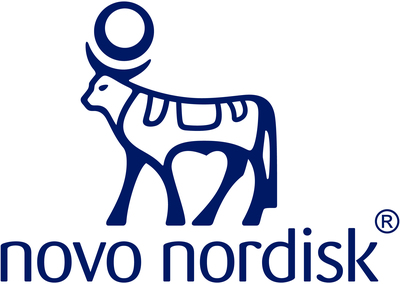New "Cities Changing Diabetes" public-private partnership in Philadelphia mobilizing against city's diabetes epidemic
Emerging research begins to identify neighborhood characteristics that could impact the incidence of and vulnerability to chronic disease
PHILADELPHIA, Nov. 19, 2019 /PRNewswire/ -- More than 100 health, faith, business and community leaders from across Philadelphia gathered today to learn about emerging research that identify general characteristics of neighborhoods that may make people more – or less – prone to developing type 2 diabetes, paving the way for more targeted interventions to prevent disease. As part of Cities Changing Diabetes, a global program sponsored by Novo Nordisk involving 25 cities around the world, these groups will be working together to develop new ways to try to change the trajectory of diabetes in Philadelphia.
The research is beginning to identify three distinct types of Philadelphia neighborhoods associated with the likelihood of residents developing type 2 diabetes:
- "Socially Cohesive" neighborhoods have strong community structures in place where residents are engaged in local organizations and in their community.
- Neighborhoods "Polarized by Change" face disruptive change that affects trust and local civic engagement.
- Thirdly are places where there is less sense of community and people invest their time outside of their community, leading to neighborhoods "Less Anchored to Place"1
Data gathered from the Brewerytown, Overbrook, and Richmond/New Kensington sections of the city were used to identify types and characteristics.
These findings are based on extensive, prior data analyses and neighborhood dialogues, as part of Cities Changing Diabetes, a global program sponsored by Novo Nordisk that helps cities around the world understand their unique diabetes challenges, identify areas and populations at greatest risk, and design and implement targeted solutions.
"By looking for certain neighborhood characteristics, we get a better understanding of the driving factors behind the rise of diabetes and obesity in urban settings, then share and apply that knowledge to build health improvement strategies for people to live healthier lives," said Stephen H. Linder, PhD, director of The Institute of Health Policy at UT Health School of Public Health and lead researcher for Cities Changing Diabetes in the US.
The Philadelphia research was conducted by the Public Health Management Corporation (PHMC) and UTHealth School of Public Health which is the lead research partner for Cities Changing Diabetes in the US. The research was sponsored by Novo Nordisk.
Philadelphia is now the second city in the US and the 25th city globally in the Cities Changing Diabetes network. Houston joined Cities Changing Diabetes five years ago and today has six initiatives that reach, empower and connect more than 75,000 Houstonians with diabetes prevention and management resources in their city.
The Houston research identified behavioral/psychosocial characteristics of those who are more vulnerable to developing diabetes. The Philadelphia research builds on the approach used in Houston and takes it to the next level: the neighborhood.
The research underscores the importance of community in addressing health and wellness and wellbeing. The Cities Changing Diabetes – Philadelphia coalition will use this information as it begins to develop and ultimately implement new programs to support diabetes prevention.
"Diabetes doesn't have to be inevitable. But to change its trajectory, we need to prevent the disease in the first place. Medicines can't be the whole solution; we all need to look at the problem differently," said Doug Langa, executive vice president, North America Operations and President of Novo Nordisk Inc. "This can't be done alone, and no single organization can carry that burden. However, by working with like-minded stakeholders in cities like Philadelphia, we can take meaningful action, together."
Diabetes in Philadelphia
Among the top 10 cities in US population, Philadelphia ranks fourth in diabetes prevalence.2,3 In Philadelphia, nearly 1 million adults are estimated to have diabetes by 2030.4
About Urban Diabetes and Cities Changing Diabetes
Cities are on the front line for diabetes. Two-thirds of people with diabetes globally live in cities. And, the highest growth in diabetes is expected to happen in urban settings.5
A global program sponsored by Novo Nordisk, Cities Changing Diabetes is a private/public partnership that helps communities understand their unique diabetes challenges, identify areas and populations at greatest risk, and design and implement targeted solutions. It brings together medical and public health institutions, communities of faith, employers, insurers, and non-profit organizations. The program launched in the US in Houston five years ago, and today five initiatives have been sustained that reach, empower, and connect more than 75,000 Houstonians to improve diabetes prevention and management in their city. The program launched in Philadelphia in November 2019. For more information, follow #UrbanDiabetes and @citiesdiabetes.
About Novo Nordisk
Novo Nordisk is a global healthcare company that's been making innovative medicines to help people with diabetes lead longer, healthier lives for 95 years. This heritage has given us experience and capabilities that also enable us to help people defeat other serious diseases including obesity, hemophilia and growth disorders. We remain steadfast in our conviction that the formula for lasting success is to stay focused, think long-term and do business in a financially, socially and environmentally responsible way. With U.S. headquarters in New Jersey and production and research facilities in six states, Novo Nordisk employs nearly 6,000 people throughout the country. For more information, visit novonordisk.us, Facebook, Instagram and Twitter.
1 Data on file
2 United States Census Bureau. American Fact Finder. Annual estimates of the resident population for incorporated places of 50,000 or more, ranked by July 1, 2018 population. https://factfinder.census.gov/faces/tableservices/jsf/pages/productview.xhtml?src=bkmk. Accessed September 19, 2019.
3 2 Centers for Disease Control and Prevention. 500 cities project: local data for better health. Interactive city map. Available at https://www.cdc.gov/500cities/index.htm . Accessed August 26, 2019.
4 Institute for Alternative Futures. Diabetes 2030 forecasts, 2015: Philadelphia metropolitan area diabetes data & forecasts. https://altfutures.org/projects/diabetes-2030/
5 Bending The Curve On Urban Diabetes Briefing Book, Cities Changing Diabetes, 2017 (link)

![]() View original content to download multimedia:http://www.prnewswire.com/news-releases/new-cities-changing-diabetes-public-private-partnership-in-philadelphia-mobilizing-against-citys-diabetes-epidemic-300960364.html
View original content to download multimedia:http://www.prnewswire.com/news-releases/new-cities-changing-diabetes-public-private-partnership-in-philadelphia-mobilizing-against-citys-diabetes-epidemic-300960364.html
SOURCE Novo Nordisk
